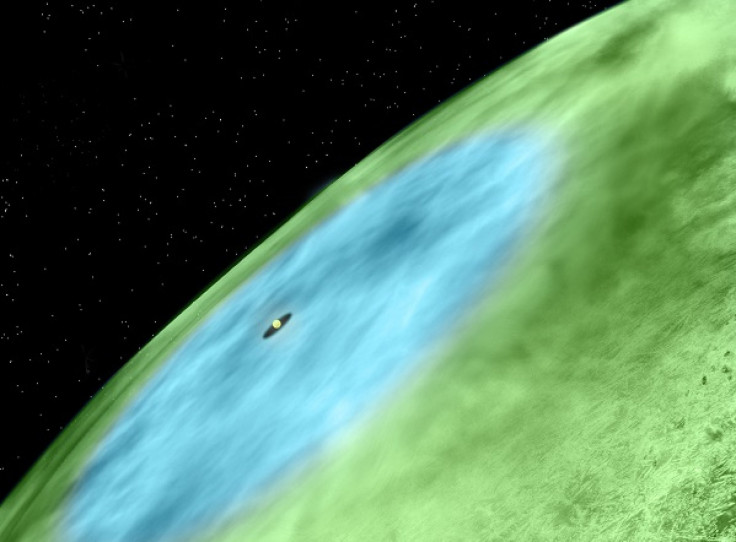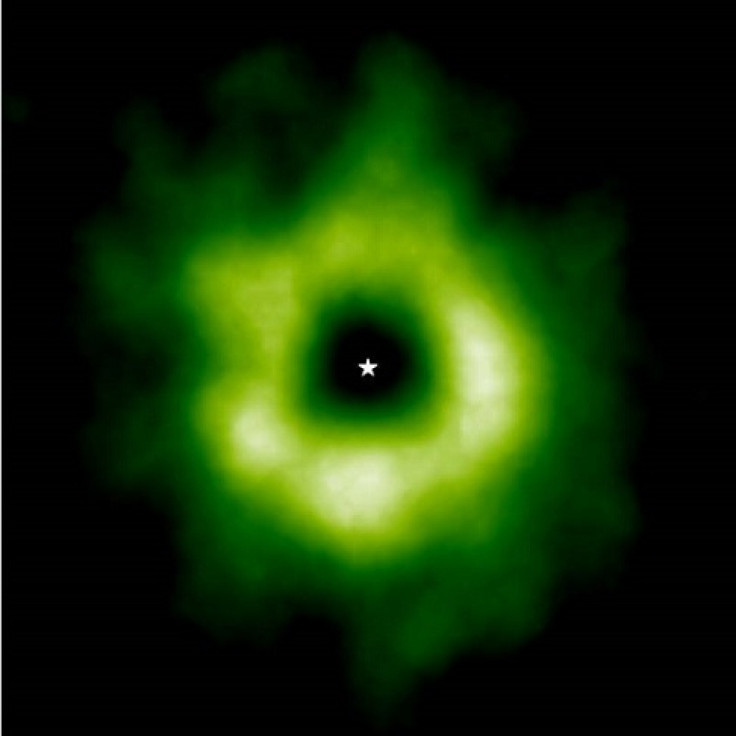Frost In Space: Astronomers Find Carbon Monoxide Snow Line Around Infant Solar System TW Hydrae

In the midst of summer heat here on Earth, scientists have found a snowy region in a baby solar system 175 light-years away from Earth.
TW Hydrae is a young orange dwarf star located in the constellation Hydra. The star, which is just about 5-10 million years old (for comparison, our own sun is a venerable 4.6 billion years old), is surrounded by a dusty disk that may one day give rise to planets. In 2011, astronomers discovered that TW Hydrae’s disk contains immense quantities of water vapor, raising the possibility that the star’s future planets could be watery.
Now, a team of researchers led by a scientist from the Harvard-Smithsonian Center for Astrophysics, says they’ve found a frosty landmark called a “snow line.” On Earth, we can see snow lines at high elevations, where atmospheric moisture freezes. Using the Atacama Large Millimeter/submillimeter Array, or Alma, telescope, scientists have now snapped a picture of a snow line in the TW Hydrae system, showing a boundary line beyond which the dust grains are coated with a frozen carbon monoxide frost.

"We can now see previously hidden details about the frozen outer reaches of another solar system, one that has much in common with our own when it was less than 10 million years old," lead author Chunhua Qi said in a statement.
A region of space so cold that carbon monoxide turns into frost might not sound particularly hospitable, but astronomers think those outer parts of the solar system could be where comets and small dwarf planets (such as our own demoted Pluto) form. Carbon monoxide ice is also key to the formation of methanol (wood alcohol), a precursor for larger, more complex organic molecules that form the building blocks of life.
While snow lines have been detected in other systems before, scientists had never taken a direct image of one. The snow line exists only in a narrow region on the central plane of TW Hydrae’s protoplanetary disk-- above and below the center line, the heat from the star prevents carbon monoxide from freezing.
Ordinarily, snapping a picture of the snow line through the dense fog of carbon monoxide would be impossible. But the scientists found a way around that problem -- to take a picture of the snow line, they looked for the presence of a molecule called diazenylium, which shines brightly enough to be detected by Alma’s radio instruments. Diazenylium is destroyed where carbon monoxide gas is present, so it would show up only where the carbon monoxide was frozen.
"Using this technique, we were able to create, in effect, a photonegative of the CO snow in the disk surrounding TW Hydrae," co-author Karin Oberg said in a statement. "With this we could see the CO snow line precisely where theory predicts it should be: the inner rim of the diazenylium ring."
SOURCE: Qi et al. “Imaging of the CO Snow Line in a Solar Nebula Analog.” Science published online 18 July 2013.
© Copyright IBTimes 2024. All rights reserved.











